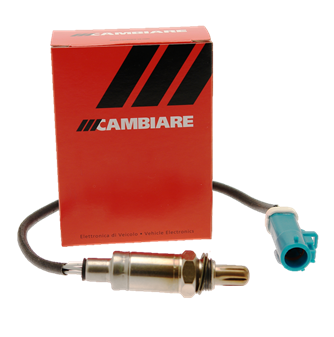Switches & Sensors

Lambda Sensor TechnologyWhile the fundamental design of combustion engines has changed very little over the last 150 years, a number of technological breakthroughs have enabled engine developers to produce faster, cleaner and more efficient engines. One of the most significant developments is the Lambda sensor, sometimes referred to as an oxygen sensor. The Lambda sensor was originally developed in the 1960s in response to government requirements that vehicle manufacturers decrease the emission levels of their engines. The sensor measures the engine’s air-to-fuel ratio in real time, allowing the ECU to adjust fuel injector output according to whether the mixture is running rich or lean. This technology has proved so successful in helping to reduce emissions that for a long time every new petrol car has had at least one fitted, and more recently we are seeing more and more cars with 2 sensors fitted – one before the catalytic convertor and one after. Modern petrol engines produce 3 main toxic gases which are carbon monoxide, nitrogen oxides and unburned hydrocarbons. The most popular way to reduce these emission gases is to use a 3-way catalytic convertor which will convert these pollutant gases into water, and the safer and less toxic gases, carbon dioxide and nitrogen. In order for the catalyst to perform efficiently the engine needs to operate at the stoichiometric point – which is the point at which the air-to-fuel ratio gives complete combustion (14.7 parts air to 1 part fuel). To measure the deviation from this ideal point we use a scale where the stoichiometric point equals 1, and is represented by the Greek symbol Lambda (λ). A rich fuel mixture would show a lower value, for example λ=0.9 and a lean mixture would read higher, for example λ=1.1. The Lambda sensor is able to monitor the air-to-fuel ratio by measuring the amount of oxygen needed to completely oxidise any remaining combustibles in the exhaust gas. This is then sent as a voltage signal back to the ECU. The ECU then varies the fuel injector output according to the real-time data received from the sensor. This is called a closed feedback loop. The Lambda sensors in the Cambiare vehicle electronics range can be divided into two types, Zirconia sensors and Titania sensors. Although these sensors both achieve the same objective, monitoring the air-to-fuel mixture, they do so in very different ways and are not interchangeable.
Technical Notes The Zirconia sensor features a hollow ceramic cylinder made from Zirconia Dioxide. The cylinder is plated on both sides with a very thin layer of porous platinum which operates as an electrode to carry the sensors signal. This is protected by a metal shell that has holes in it, allowing the exhaust gases to flow into the body of the sensor. The centre of the cylinder is hollow and contains ambient air to be used as a reference gas. To work effectively the sensor needs to be heated to just above 300°C which is why most modern sensors now feature a heating element. At this temperature, the properties of the sensor change to allow the movement of oxygen ions through it. This movement stores a charge in the platinum coating. The strength of this charge is based on the amount of movement of oxygen through the sensor. The ions move because they will always look to travel from a high concentration of oxygen to a low concentration in order to create a balance. The greater the difference in oxygen between the exhaust gas and the reference gas then the stronger the charge. At the stoichiometric point the ECU will read a charge of approximately 0.45 volts while a rich fuel mixture will read 0.9 volts and a lean mixture will read 0.1 volts. The sensor is most sensitive near the stoichiometric point and less sensitive when either very lean or very rich. The ECU is able to read this change in voltage and modify the fuel injector output accordingly. The Titania sensor looks very similar to the Zirconia type, although it is normally smaller. The fundamental difference between the two is that unlike the Zirconia sensor, the Titania type is not able to generate a voltage and requires a base voltage to be supplied by the ECU. Furthermore this type does not require a sample of reference air. The sensor is made from a titanium dioxide ceramic element which changes electrical resistance in response to the concentration of oxygen in the exhaust gas. The ECU then measures this signal and adjusts the fuel feed in response. If the fuel mixture is rich, the resistance will measure low. An oxygen rich, or lean mixture, will have a high resistance measure. For a time many vehicles used Titania sensors but these are now being replaced by more sophisticated Zirconia sensors. |
Related Articles Related Downloads |
